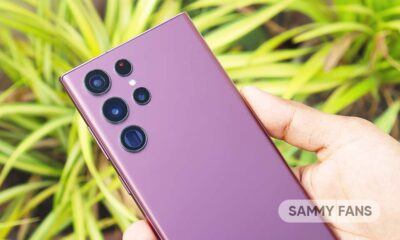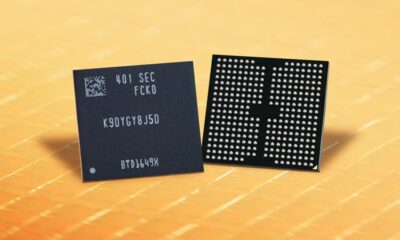
Samsung Exynos 2100: ‘Tiny as a chip, monster as a performer’
At the moment, Exynos 2100 is one of the best flagship chipsets available in the market, even it outperforms Snapdragon 888 as we saw earlier in various benchmarks tests. However, to showcase its power Samsung installed this in-house chipset in its top-notch Galaxy S21 smartphones.
Now, to explore more about this high-end processor, the Korean tech giant uploaded an informative video on Youtube that explains each and every aspect of this chip. So without wasting any time let’s dive into its details.

Samsung Exynos 2100 – ‘Tiny as a chip, monster as a performer’
Exynos 2100 is Samsung’s first 5G-integrated flagship mobile processor that provides a maximum downlink speed of up to 5.1Gbps in sub-6GHz and 7.35Gbps in mmWave. However, it is the second chipset from the company that built on a 5nm process technology.
Therefore, it delivers 20-percent lower power consumption and 10-percent higher performance when compared to its 7nm predecessor. Meanwhile its rival, Snapdragon 888 is also based on the same fabrication process.
Talking about the processing units, its CPU works by having a powerful Arm Cortex-X1 core for running at up to 2.9GHz. While it also has three high-performing Cortex-A78 cores and four power-efficient Cortex-A55 cores for blazingly fast outputs. Therefore, Samsung claims that it is 30% faster in multi-core tasks when compared to Exynos 990.
For handling the graphics, it features the new 14 core Mali-G78 GPU which supports the latest APIs, Vulkan, and OpenCL that leads to a 40 percent improvement in graphics performance while playing intense games like COD or PUBG.
The animated clip also tells about its new tri-core NPU (Neural Processing Unit) which comes with new architectural enhancements, used for reducing unnecessary tasks.
These structural changes are also used for proper work utilization and providing support for feature-map and weight confining. Resulted, it can perform up to 26-trillion-operations-per-second (TOPS) with more than twice the power efficiency, which is rare in the premium chipset segment.
What does it offer to handle the camera department?
For the best camera output, Exynos 2100 new ISP (Image Signal Processor) supports camera resolutions of up to 200-megapixels and can manage up to six individual sensors at the back while processing image data from four sensors simultaneously.
In addition, the multi-camera and frame processor (MCFP) of ISP can also combine feeds from multiple cameras to improve zoom performance and enhance image quality for ultra-wide shots.
Last but not least, the chipset offers a refresh rate of up to 144Hz for smooth scrolling while working on the internet. Besides, it supports HDR10+ displays with up to 4K resolution. However, you can record 8K videos from the phone that can be projected on TV or other big screens.
STAY CONNECTED WITH US:
-
- Join SammyFans on Telegram
- Like SammyFans.com on Facebook
- Follow SammyFans on Twitter
- Get the latest insights through Google News
- Send us tips at – [email protected]
News
Samsung considers LockStar support for Galaxy S24 AOD customization

Samsung is reviewing LockStar for Galaxy S24 AOD customization. The Korean community’s moderator confirmed that the latest flagship phones don’t support personalization of the always-on-display using Good Lock’s LockStar module.
Thanks to the new screens, Samsung’s Galaxy S24 series brings an iPhone-like Always On Display feature. However, the company seemingly missed bounding it with Good Lock for customization. As a result, users are facing issues tweaking it through LockStar.
However, the latest input confirms that Samsung is considering LockStar support for Galaxy S24 AOD. This will allow users to renovate the always-on-display functionality on their device in various aspects including removal of certain elements.
LockStar doesn’t support AOD customization in the Galaxy S24 series. While an internal review is underway, a possible release may happen shortly. Meanwhile, the moderator hasn’t shared any specific timeline regarding the availability of the support.
Good Lock’s LockStar is one of the most popular plugins for Galaxy customization. Not only the lock screen, the LockStar also lets users tweak the AOD function. The suite will likely add support for the newly released phones well before July Unpacked.
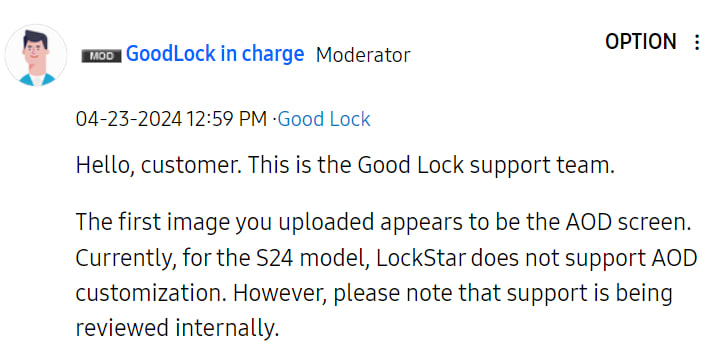
Image: Samsung Community
Stay up-to-date on Samsung Galaxy, One UI & Tech Stuffs by following Sammy Fans on X/Twitter. You can also discover the latest news, polls, reviews, and new features for Samsung & Google Apps, Galaxy Phones, and the One UI/Android operating system.
Do you like this post? Kindly, let us know on X/Twitter: we love hearing your feedback! If you prefer using other social platforms besides X, follow/join us on Google News, Facebook, and Telegram.
News
Beyond Apple, Huawei’s resurgence in China raises concerns for Samsung
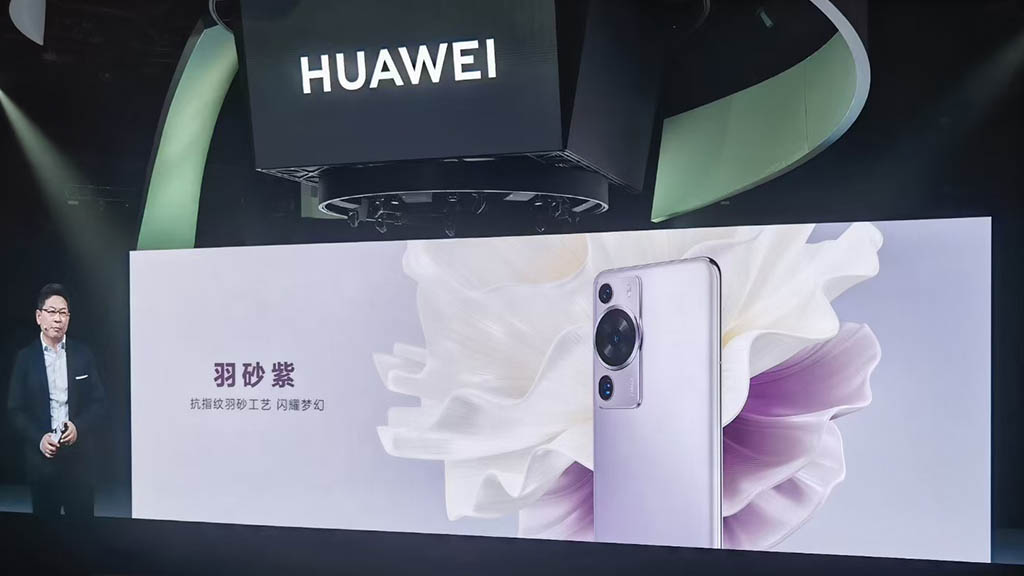
Huawei is making a stunning comeback in its home ground. The company scored a 70% year-on-year growth in its smartphone sales in China in the first quarter. At the same time, sales of Apple dropped by over 19%, reports Counterpoint Research.
The report highlights that the Chinese phone maker is set to outpace Apple in China. As Apple is already facing heat, it’s alarming for all smartphone vendors including Samsung. After Apple, Huawei’s next target will be Samsung which leads the Global market.
Huawei, which was at 9.3% in the first quarter of 2023, jumped to 15.5% in Q1 this year. Apple led the Chinese market in 1Q23 with approximately 20% market share slipped to 15.7% in the first quarter of this year, dropping to the third spot in China.
Earlier, IDC pointed out that Apple is facing a market decline as it lost momentum in China. The local government’s push for local vendors is also helping Huawei to eat Apple’s market. Well, Vivo and Honor were the top two brands by market share.
“Apple’s sales were subdued during the quarter as Huawei’s comeback has directly impacted Apple in the premium segment,” said Ivan Lam, senior research analyst at Counterpoint.
Stay up-to-date on Samsung Galaxy, One UI & Tech Stuffs by following Sammy Fans on X/Twitter. You can also discover the latest news, polls, reviews, and new features for Samsung & Google Apps, Galaxy Phones, and the One UI/Android operating system.
Do you like this post? Kindly, let us know on X/Twitter: we love hearing your feedback! If you prefer using other social platforms besides X, follow/join us on Google News, Facebook, and Telegram.
News
Samsung and Intel team up to power the future of AI PCs
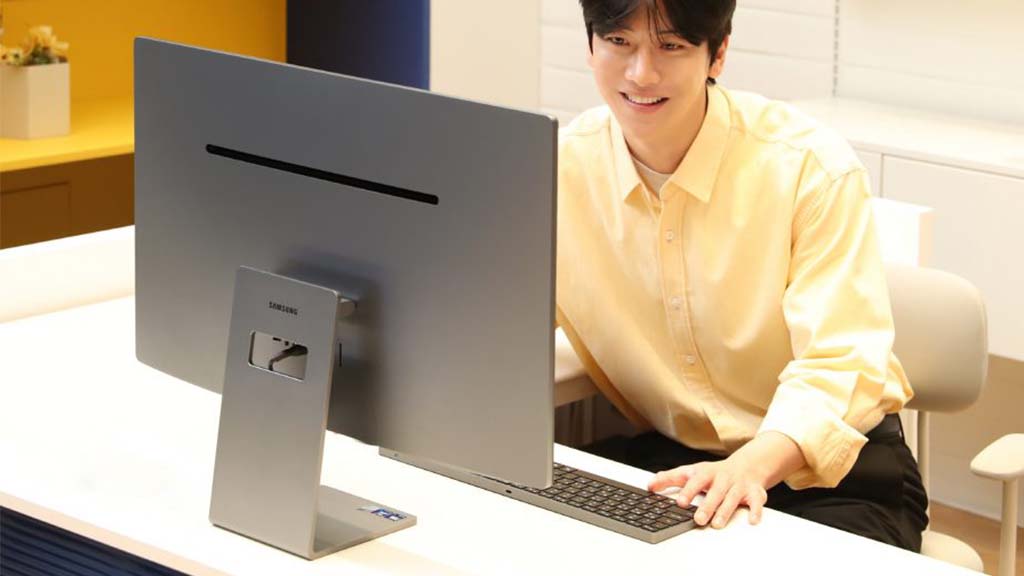
Apart from mobile, Samsung is also focusing on the PC market. The company has recently launched its new all-in-one PC “All-in-One Pro.” At the event, the VP of Intel Korea Samsung Business Division announced the intention to work with Samsung for the AI PCs market.
Galaxy AI is a hit, helping Samsung sell the Galaxy S24 series worldwide. The Korean tech giant is also bringing AI capabilities to its laptop line. Compared to smartphones, laptops, and PCs would offer way better AI features and abilities to bolster productivity.
Samsung’s All-in-One Pro features Intel’s Core Ultra AI PC processor CPU. Thanks to Intel’s external GPU, Arc, graphics performance in the all-in-one PC has also improved twofold compared to the previous generation, and power efficiency has been improved by 25%.
“In this trend where AI is present everywhere, the PC is the product that we experience directly and use for production activities,” stated Bae Tae-won.
As far as AI features are concerned, Intel is committed to offering a complimentary “AI Creator App Package” that consists of the Luminar Neo photo editing software named “Affinity” as well as the Magix video editing application “Vegas.”
Apart from Intel, Samsung also partnered with Microsoft to bring a dedicated Copilot key to the wireless keyboard of the All-in-One Pro PC. Such kind of collaborations offer deeply enhanced user experience as accessing AI-powered Copilot is just a keypress away from you.
Stay up-to-date on Samsung Galaxy, One UI & Tech Stuffs by following Sammy Fans on X/Twitter. You can also discover the latest news, polls, reviews, and new features for Samsung & Google Apps, Galaxy Phones, and the One UI/Android operating system.
Do you like this post? Kindly, let us know on X/Twitter: we love hearing your feedback! If you prefer using other social platforms besides X, follow/join us on Google News, Facebook, and Telegram.





